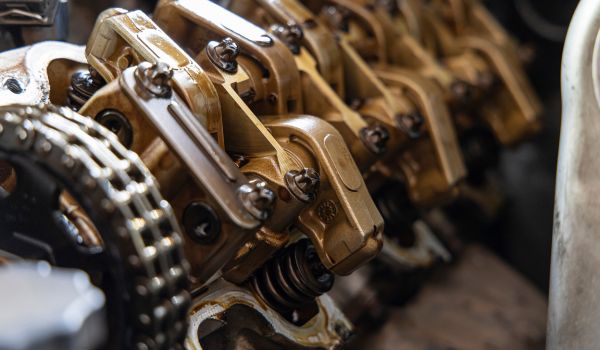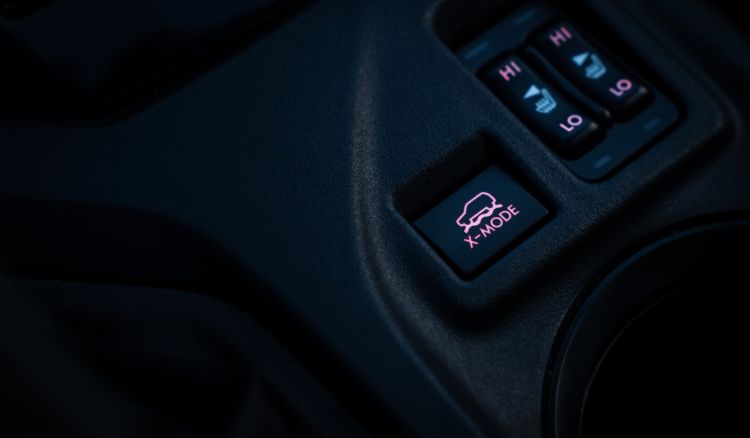A blown head gasket can harm other components of the engine and make the engine lose energy. Oil on the dipstick is a familiar signal that tells you something approximately the health of the engine. Knowing what causes this hassle, the way it affects drivers and the way to diagnose it is able to save time, money, and stress for each new and experienced driver. The oil tester is very critical for finding this hassle and fixing it.
The signs and reasons for a burst head gasket
A blown head gasket takes place when the seal between the engine middle and cylinder head breaks. This can cause troubles just as the engine burning, misfiring, or not nicely put in the gasket. There may be white smoke, coolant leaks, engine overheating, loss of electricity, and oil that seems like milk.
Blown Head Gasket Oil Dipstick Signs
White smoke from the exhaust
Overheating engine
The sweet smell of coolant
Milky oil on a dipstick
Loss of engine electricity
Bubbling or gurgling noises from the radiator
Importance Of Checking The Oil Dipstick
Vehicle owners should check the oil dipstick on a regular foundation to ensure there’s enough lube. Additionally, they should reduce friction and avoid harm. It offers beneficial information about the kingdom and the amount of engine oil. This showing feasible troubles like infection or breakdown. By doing this as a part of everyday care, vehicle proprietors can make the engine closing longer. Consequently, they can be greater reliable, as a way to shop their money on maintenance.
How To Identify A Blown Head Gasket
Intently searching at the oil dipstick may discover a broken head gasket in an engine.. It is an essential device for checking the oil quantity and pleasant. If the dipstick appears milky, it means the top gasket has failed, since the water and oil have to stay separate. So, checking the engine frequently and maintaining a close eye on the dipstick can help discover a blown head gasket early, stopping the engine from getting worse.
Potential Damage From Oil Contamination
Oil contamination can harm an engine, which could suggest high-priced fixes or maybe harm. Because it no longer greases, it causes greater wear and friction on vital components, lowering performance and efficiency. Contaminated oil can also form sludge and layers that impair functionality. To keep the engine from breaking down and to ensure it lasts as long as viable, the oil dipstick should be checked frequently for signs of contamination. Fixing issues with oil pollutants is important to forestall extra damage from occurring.
Steps To Repair A Blown Head Gasket
To repair a blown head gasket, clean the coolant, take out the elements, loosen the bolts, test the cylinder head for cracks, warping, or damage, and replace it if needed. Clean the floor of the engine block, deploy a new head gasket, and tighten the bolts in keeping with the producer’s commands. This careful manner will restore the engine’s overall performance and keep it from getting worse.
Head Gasket Repair Steps
Check The Dipstick For Milky Oil
If the head gasket blows, oil and coolant can mix inside the oil pipes, making them appear foamy. When the tester shows milky oil, it means that there may additionally have been a breach. If the dipstick shows milky oil, you need to restore the hassle properly due to the fact a blown head gasket can cause greater harm to the engine in case you do not.
Verify Cooling System Pressure
If there’s water in the engine oil, it means the pinnacle gasket has blown. Consequently, this can make the oil less lubricating, which could harm the engine. Therefore, it’s crucial to check the stress inside the cooling system with a strain tester to ensure the prognosis is correct. Additionally, look for signs and symptoms of coolant leaks or a sudden drop in strain. Taking care of a broken head gasket is essential for the existence and performance of the automobile. As a result, checking the oil dipstick frequently can assist in locating it early.
Test Compression In Cylinders
An oil dipstick is one of the most crucial gear for locating an engine with a blown head gasket. It can find atypical things such as milky or thick oil, and it can also test compression by watching smoke come out of the oil fill cap while the engine is running.The dipstick tells you a lot about the nation of the engine because it lets you speedy study the oil’s appearance and experience. There will also be air bubbles in the oil, which means the head
Inspect The Head Gasket For Damage
It is viable for oil and water to combine or leak into the cylinders if the head gasket blows. This can hurt the engine. Check the oil dipstick for any milky or sticky substance to find a damaged head gasket. This suggests that the top gasket is damaged, causing the coolant and oil to combine. To keep the engine from getting worse, it is vital to restore the difficulty right away.
Remove And Replace The Damaged Head Gasket
A damaged head gasket is the main hassle in an engine that could cause damage and burning. It can be seen via the oil on the oil dipstick, which can blend with water within the engine oil. So, taking care of the seal right away is vital to keep it away from harm. However, by changing the broken gasket, the seal between the engine block and cylinder head is restored, which maintains the engine going for walks nicely. Changing the oil and checking the dipstick on a regular foundation is critical for retaining the engine walking well and lasting a long time.
Refill The Oil And Coolant And Test For Leaks
If there may be oil within the coolant, it means the top gasket has blown. It is essential to have a look at the oil dipstick for signs and symptoms of infection or discolouration to figure out how healthful the engine is and the way the repair worked. Once the engine is fixed, it needs to be refilled with new oil and coolant to keep it jogging easily. Checking the oil dipstick on an everyday basis can let you know loads about the health of the engine and assist you in noticing problems before they get too terrible.
Conclusion
The head gasket can harm the engine, so it wishes to be fixed with the aid of an expert and saved in good form. In conclusion, regular checks can find the hassle and fix it, saving you money and time and preserving your automobile in the correct form.
FAQ
How can I inform if my broken head gasket is inflicting oil infection at the dipstick?
With a damaged head gasket, oil pollutants on the dipstick can make the oil appear milky or foamy. This is probably because the coolant and oil are mixing, making a scent that is both sweet and strong.
What are the not unusual symptoms and symptoms of a blown head gasket affecting the oil dipstick?
If the oil tester suggests foamy oil, then the engine overheats, and as a result, white smoke comes out. Furthermore, if the coolant is misplaced, it is able to means that there may be a problem with the oil that desires to be constant right away.
Can a blown head gasket purpose the oil dipstick to expose a milky or foamy substance?
If the pinnacle gasket blows, coolant can leak into the engine oil and show up as milky or foamy on an oil tester. Consequently, this is a sign of a first-rate problem that wishes to be fixed right away in order to prevent the engine from getting worse.
Is it possible for a broken head gasket to cause oil loss or low oil ranges on the dipstick?
A broken head gasket can lead to oil loss or low oil stages on the dipstick as it could coolant into the engine oil pipes. This way the engine may not be as nicely lubricated and will even get broken.
What steps have I taken if I suspect a broken head gasket is affecting the oil dipstick in my vehicle?
The head gasket, which is a vital part of the oil dipstick, can blow, doing loads of damage. So, it’s critical to pull over and feature the auto-moved to a restore store.






